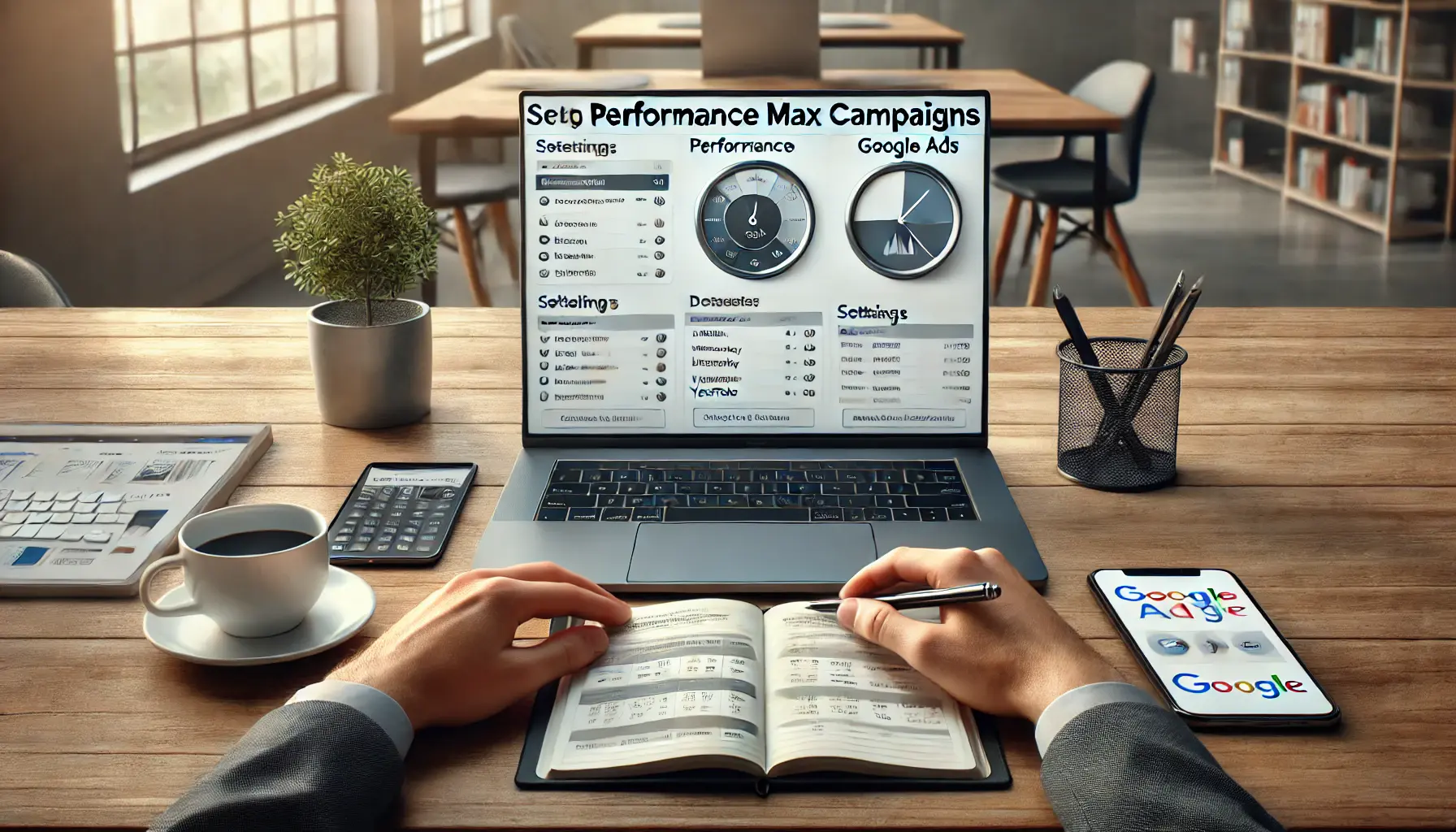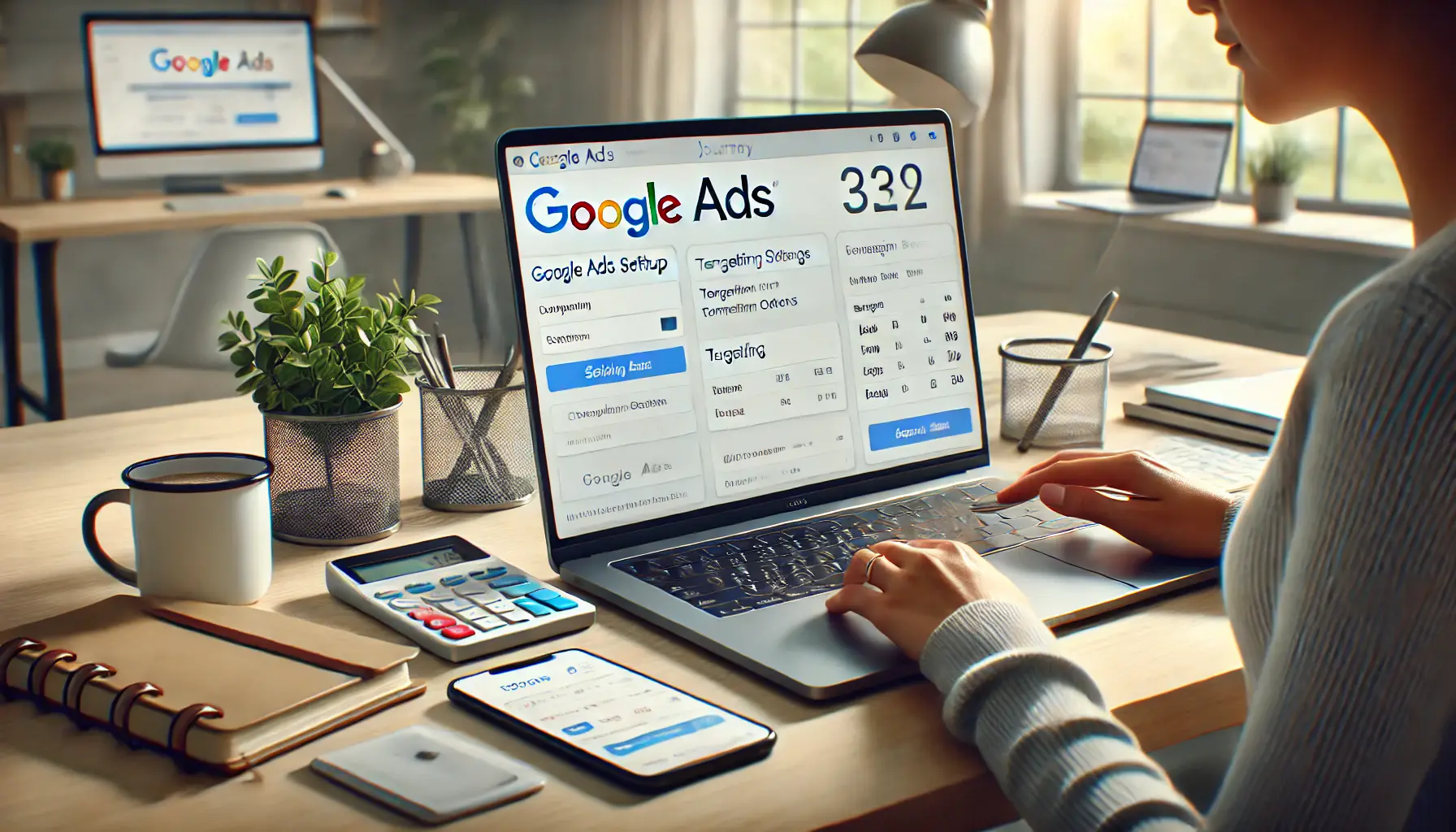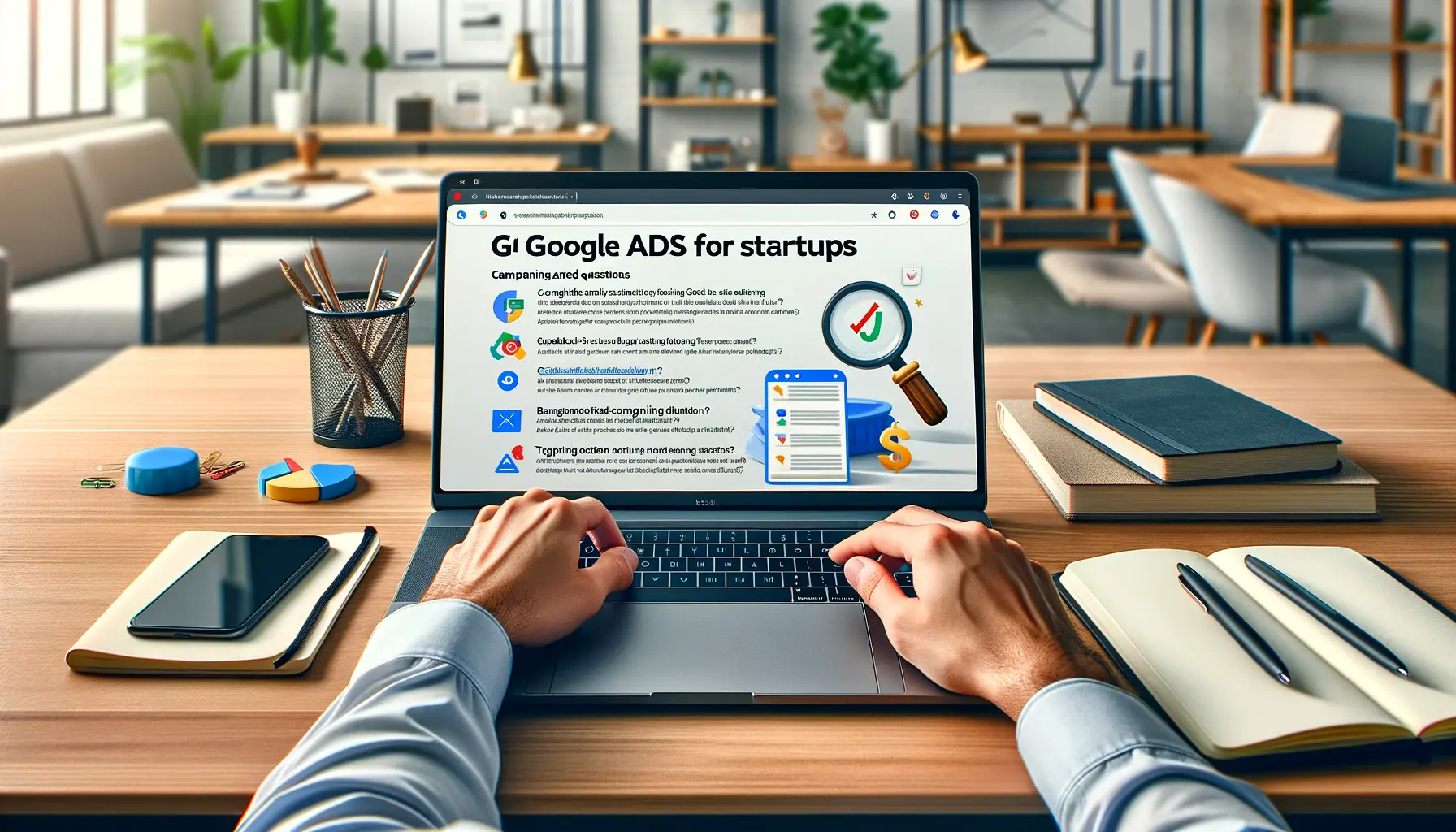In the fast-paced world of startups, finding effective ways to grow quickly and sustainably is crucial.
Digital marketing, particularly through Google Ads, has become one of the most vital strategies by which startups build their brand awareness, generate leads, and boost conversions.
Leveraging the power of Google Ads empowers a startup to reach a very wide audience while optimizing budgets toward measurable results.
But how do you make the most of this powerful tool?
This article explores the growth hacks that startups can use to maximize their impact with Google Ads.
- Why Google Ads Are Essential for Startups
- Setting Up Your First Google Ads Campaign
- Optimizing Google Ads for Startup Success
- Advanced Strategies for Scaling Your Google Ads Campaigns
- Real-World Success Stories of Startups Using Google Ads
- Mastering Google Ads for Startup Success
- Frequently Asked Questions About Google Ads for Startups
Why Google Ads Are Essential for Startups
For startups, every dollar spent on marketing needs to count.
This is where Google Ads proves invaluable, offering a platform that can deliver targeted results while remaining cost-effective.
Whether you’re looking to generate awareness, drive sales, or attract investors, Google Ads provides a range of tools to help you reach your goals efficiently.

Digital marketing workspace illustrating startup growth with Google Ads performance analytics.
The Role of Google Ads in Startup Growth
Google Ads plays a vital role in helping startups grow by providing instantaneous visibility in search results.
Unlike organic search, which takes months to deliver the desired results, paid ads can help a startup show up right in front of its target audience within an instant.
Imagine being able to showcase your product or service to someone searching for it at the exact moment they need it.
That’s the power of Google Ads—it bridges the gap between your offering and the customer’s need.

Startup entrepreneur reviewing Google Ads performance and budget for cost-effective advertising.
Cost-Effective Advertising for New Businesses
The biggest advantage of Google Ads is its flexibility in budgeting.
You can start small, monitor the performance of your campaign, and scale up when you start to see results.
For startups with limited resources, this can be game-changing.
- Set a daily budget so that you never overspend.
- Customize bid strategies to maximize ROI.
- Utilize detailed analytics to identify what’s working and what isn’t.
With such control over spending, startups can focus their resources on campaigns that drive real value.

Digital marketing control room illustrating precision in audience targeting with Google Ads.
Reaching the Right Audience with Precision
Google Ads allows you to define your audience with incredible precision.
From demographics and location to specific interests and search intent, startups can ensure their ads reach the people most likely to convert.
This level of targeting not only increases the effectiveness of your campaigns but also minimizes wasted ad spend.

Startup office showcasing creative brainstorming and brand-building strategies from day one.
Building Brand Awareness from Day One
A common problem for startups is how to be noticed within a sea of competitors.
Google Ads offers Display and Video ad formats that can help startups build brand recognition early on.
Both these formats let businesses communicate their identity, values, and unique value proposition in the most captivating manner.
- Display ads can feature eye-catching visuals that attract attention.
- Video ads tell your startup’s story in a more impactful way.
By leveraging Google Ads early on, startups can position themselves as serious players in their field, setting the stage for long-term success.
Google Ads offers startups a cost-effective way to generate awareness, drive sales, and target precise audiences. Its flexibility in budgeting and immediate visibility make it a vital tool for growth.

Marketer setting up the first Google Ads campaign with a focus on targeting and campaign settings.
Setting Up Your First Google Ads Campaign
Running your first Google Ads campaign is both exciting and daunting.
Done right, you can reach your target audience and achieve your startup’s marketing objectives.
Let’s go through the necessary steps to set up a successful campaign.

Marketer evaluating various Google Ads campaign types to align with business goals.
Picking the Right Campaign Type for Your Goals
Google Ads offers different campaign types tailored to various objectives:
- Search Campaigns: Text ads that appear on Google search results, ideal for reaching users actively looking for your product or service.
- Display Campaigns: Visual ads displayed across Google’s partner sites to build brand awareness.
- Video Campaigns: Video ads shown on YouTube and other Google video partners to engage users effectively.
- Shopping Campaigns: Promote your products directly within Google Shopping, suitable for e-commerce startups.
- App Campaigns: Drive app installs and engagement across Google’s platforms.
Align your campaign type with your specific marketing goals to ensure optimal performance.

Marketer setting a realistic advertising budget for Google Ads campaigns in a startup office.
Setting a Realistic Budget for Startups
Budgeting is key, and for startups with limited resources, it’s essential to allocate funds wisely.
Google Ads allows you to set an average daily budget, giving you control over your spending.
Here’s how to approach it:
- Decide on your overall marketing budget and dedicate a portion to Google Ads.
- Set an average daily budget that reflects your monthly spending goals. For example, a daily budget of $10 equates to approximately $304 per month (based on 30.4 days).
Remember, it’s advisable to start with a modest budget and scale up as you gain insights into what works best for your startup.

Marketer following a step-by-step process to create effective Google Ads in a professional workspace.
Step-by-Step Guide to Creating Effective Ads
Crafting compelling ads is key to attracting and converting your target audience.
Follow these steps:
- Define Your Objective: Clearly identify what you want to achieve, whether it’s sales, leads, or website traffic.
- Identify Target Keywords: Use tools like Google’s Keyword Planner to find relevant keywords your potential customers are searching for.
- Write Engaging Ad Copy: Ensure your ad headlines and descriptions are clear, compelling, and include your target keywords.
- Design a Strong Call-to-Action (CTA): Encourage users to take specific actions, such as ‘Shop Now,’ ‘Learn More,’ or ‘Sign Up Today.’
- Set Up Ad Extensions: Enhance your ads with additional information like site links, call buttons, or location details for better visibility and click-through rates.
By setting up your ads correctly, you ensure they effectively communicate with and attract your intended audience.

Marketer reviewing Google Ads settings and avoiding common pitfalls in the ad setup process.
Avoiding the Pitfalls in Ad Setup
To get the most from your Google Ads campaign, avoid these common mistakes:
- Ignoring Negative Keywords: Not using negative keywords can lead to your ads appearing for irrelevant searches, wasting your budget.
- Poor Landing Page Experience: Ensure that the landing page your ad directs to is relevant, loads quickly, and provides a good user experience.
- Not Utilizing Conversion Tracking: Without tracking, it’s challenging to measure success and ROI. Set up conversion tracking to monitor actions like purchases or sign-ups.
- Overlooking Mobile Optimization: With a significant number of users accessing content via mobile devices, ensure your ads and landing pages are mobile-friendly.
By addressing these pitfalls proactively, you can set up your startup’s Google Ads campaign for success and maximize its potential impact.
Starting with a realistic budget and understanding different campaign types are key steps to launching an effective Google Ads campaign for startups.

Marketer optimizing Google Ads performance for startup success in a professional workspace.
Optimizing Google Ads for Startup Success
Once your Google Ads campaign is up and running, the next crucial step is optimization.
Effective optimization ensures that your ads perform at their best, delivering maximum return on investment (ROI) for your startup.
Let’s explore key strategies to enhance your Google Ads performance.

Marketer conducting A/B testing to improve Google Ads performance in a digital marketing workspace.
The Importance of A/B Testing for Better Performance
A/B testing, or split testing, involves comparing two versions of an ad to determine which performs better.
This method is essential for refining your ads based on data-driven decisions.
By systematically testing different elements—such as headlines, ad copy, images, and calls-to-action—you can identify what resonates most with your audience.
For instance, testing two different headlines can reveal which one garners a higher click-through rate (CTR).
Implementing successful A/B tests leads to improved ad performance and a more efficient allocation of your advertising budget.

Marketer analyzing keyword research data to strategically outsmart competitors in Google Ads campaigns.
Leveraging Keyword Research to Outsmart Competitors
Thorough keyword research is fundamental to the success of your Google Ads campaigns.
By identifying and targeting the right keywords, you ensure that your ads appear to users who are actively searching for products or services like yours.
You can use tools such as Google’s Keyword Planner to find relevant keywords and gauge their search volumes and competition levels.
Focus on long-tail keywordsSpecific, less competitive phrases that often have higher conversion rates due to user intent.—phrases that are more specific and less competitive.
These keywords often have higher conversion rates because they cater to users with clear intent.
Regularly updating your keyword list helps you stay ahead of competitors and adapt to changing market trends.

undefined
Using Negative Keywords to Avoid Wasted Spend
Negative keywords keep your ads from displaying for irrelevant searches and save your budget for more qualified clicks.
For example, if you’re selling a premium product, adding ‘cheap’ as a negative keyword ensures your ads do not appear to users searching for bargain options.
Regularly review your search terms reportA Google Ads feature that shows the actual search queries triggering your ads. to identify and exclude terms that aren’t relevant to your offerings.
This practice refines your audience targeting and enhances the overall efficiency of your campaigns.
Marketer analyzing Google Ads ROI metrics and performance indicators in a modern office workspace.
Tracking and Measuring ROI Effectively
Monitoring the performance of your Google Ads campaigns is crucial to understanding their effectiveness and making informed decisions.
Enable conversion tracking for actions that are valuable to your business, such as purchases, sign-ups, or inquiries.
Analyze metrics such as CTR, conversion rate, cost per conversion, and overall ROI.
These insights will help you adjust your strategies, reallocate budgets, and continuously improve campaign performance.
Using tools like Google AnalyticsA web analytics service by Google for tracking and reporting website traffic. together with Google Ads provides a full overview of user behavior and campaign outcomes.
By implementing these optimization strategies, your startup can ensure that every dollar spent on Google Ads contributes effectively to nurturing your business.
Regular optimization, including A/B testing and leveraging negative keywords, ensures better ad performance and efficient use of budgets.

Marketer analyzing advanced Google Ads features for scaling campaigns in a modern workspace.
Advanced Strategies for Scaling Your Google Ads Campaigns
As your startup grows, it’s essential to scale your Google Ads campaigns effectively to reach a broader audience and drive more conversions.
Implementing advanced strategies can help you achieve sustainable growth while maintaining a healthy return on investment (ROI).
Let’s explore key tactics to elevate your advertising efforts.

undefined
Implementing Performance Max Campaigns
Performance Max campaigns allow you to tap into all Google Ads channels and inventory with a single campaign across Search, YouTube, Display, Discover, Gmail, and Maps.
This holistic approach enables you to achieve more conversions and reach your target audience in a much better way.
Performance Max campaigns use AI-powered insights from Google to optimize ad delivery and bidding, ensuring your ads are shown to the right users at the right time.

Marketer reviewing remarketing campaign performance to engage previous website visitors in a modern workspace.
Utilizing Remarketing Techniques
Remarketing involves targeting users who have previously interacted with your website or app but haven’t converted.
By re-engaging these potential customers with tailored ads, you can remind them of your offerings and encourage them to complete their desired actions.
Implementing remarketingA digital marketing strategy that targets users who have previously interacted with a website or app. strategies can lead to higher conversion rates and improved ROI, as you’re focusing on an audience already familiar with your brand.

Marketer expanding audience reach by refining targeting options in a digital marketing workspace.
Expanding Your Audience Reach
To scale your campaigns, consider broadening your audience targeting.
Utilize Google’s audience expansion tools to reach users with similar interests and behaviors as your existing customers.
Additionally, explore new geographic locations and demographics that align with your business objectives.
Expanding your audience reach can increase brand visibility and attract new customers.

Marketer reviewing and adjusting ad creatives to optimize messaging and improve ad performance.
Optimizing Ad Creative and Messaging
As you scale, it’s crucial to continually test and refine your ad creatives and messaging.
Develop multiple ad variations to identify which resonate best with your target audience.
Focus on creating compelling headlines, engaging visuals, and clear calls-to-action.
Regularly updating your ad content keeps your campaigns fresh and relevant, enhancing user engagement and conversion rates.

Marketer monitoring and adjusting Google Ads bidding strategies to optimize campaign performance.
Monitoring and Adjusting Bidding Strategies
Scaling your campaigns requires artful management of your bidding strategies.
Employ automated bidding options like Target CPAA Google Ads bidding strategy that focuses on optimizing cost per acquisition. and Target ROASA Google Ads bidding strategy that optimizes return on ad spend. to optimize your bids in real time based on performance data.
Keep a close eye on your campaigns to ensure your bidding strategy remains aligned with your business goals, and make changes accordingly to maintain profitability.
By including these advanced strategies, your startup can effectively scale its Google Ads campaigns, achieve higher exposure, and drive sustainable growth.
Remember, continuous performance analysis and data-driven decision-making are key to further optimizing your advertising efforts.
Implement advanced strategies like Performance MaxA campaign type in Google Ads that uses automation to optimize across all Google platforms. campaigns and remarketing to scale your Google Ads effectively while maintaining high ROI.

Marketer reviewing real-world success stories of startups using Google Ads to achieve growth.
Real-World Success Stories of Startups Using Google Ads
Understanding how other startups have leveraged Google Ads can provide valuable insights and inspiration for your own campaigns.
Here are some real-world examples of startups that achieved significant growth through strategic use of Google Ads:

Marketer working on Google Ads display ads to build brand awareness for Beekman 1802.
Beekman 1802: Building Brand Awareness
Beekman 1802, a lifestyle brand, utilized Google Ads to enhance their e-commerce presence.
By bidding on branded termsKeywords that include the name of a brand or company., they improved their search rankings and directed users to their direct-to-consumer platform, effectively increasing brand visibility and sales.

undefined
Octopus Energy: Rapid Customer Acquisition
Launched in 2016, Octopus Energy aimed to disrupt the energy sector with better pricing and customer service.
Through a well-crafted Google Ads strategy, they signed up over 2 million customers, showcasing the platform’s potential for rapid customer acquisition.

undefined
LØCI: Achieving High Return on Ad Spend
LØCI, a fashion brand specializing in ethical trainers and apparel, achieved a 500% return on ad spend (ROAS) using Google Ads.
By targeting the right audience at the right time, Google Ads contributed to 50% of LØCI’s total e-commerce revenue.

undefined
Asutra: Promoting Wellness Products
Asutra, a wellness brand, used Google Ads and Performance Max campaigns to find more customers and ramp up conversion rates for their self-care products.
This strategy enabled them to effectively sell to a larger audience and grow their customer base significantly.
By looking at startups across various industries that have implemented Google Ads successfully, you might find strategies and approaches that can benefit your own startup too.
Analyzing these success stories can provide actionable insights to enhance your campaigns and achieve similar results.
Learning from startups like Beekman 1802 and Octopus Energy showcases how strategic use of Google Ads can lead to significant growth and success.

Marketer optimizing Google Ads campaigns for startup success in a modern workspace.
Mastering Google Ads for Startup Success
Google Ads is an indispensable tool for startups striving to build brand awareness, drive customer acquisition, and achieve sustainable growth.
By leveraging its vast potential, startups can effectively compete in their markets, optimize their advertising budgets, and scale their businesses with precision.
This article explored actionable strategies and inspiring success stories to guide startups on their Google Ads journey.

Marketer summarizing the core takeaways from a Google Ads campaign in a modern workspace.
The Core Takeaways
In this article, we have discussed the following key areas that are important to master in Google Ads:
- Essentials of Google Ads: Understand why Google Ads is a powerful platform for any startup to get immediate visibility and reach a targeted audience.
- Campaign Setup: Learn how to choose the right campaign types, set realistic budgets, and create engaging ad copy to make your campaign successful.
- Optimization Techniques: Implement A/B testing, utilize keyword research, and track performance metrics to refine campaigns and maximize ROI.
- Advanced Strategies: Scale campaigns using Performance Max, remarketing, audience expansion, and advanced bidding techniques to reach broader audiences.
- Real-World Insights: Draw inspiration from successful startups that used Google Ads to drive brand growth, customer engagement, and impressive returns.

Marketer analyzing long-term growth metrics and adjusting strategies for sustainable growth in a modern workspace.
Achieving Sustainable Growth
For startups, the path to growth involves strategic decision-making and continuous improvement.
Google Ads provides the tools and flexibility to navigate this journey, offering unparalleled opportunities to connect with target audiences and achieve measurable results.
However, success demands ongoing analysis, experimentation, and adaptation to stay ahead in a competitive landscape.

Marketer beginning their Google Ads journey by setting up the first campaign in a professional workspace.
Start Your Google Ads Journey Today
Whether you’re setting up your first campaign or scaling an existing effort, the strategies shared in this article will serve as a roadmap for maximizing your success with Google Ads.
Embrace the insights, experiment with new techniques, and tailor your approach to align with your startup’s unique goals.
With dedication and informed strategies, your startup can harness the full potential of Google Ads to thrive and grow.
Now is the time for action.
Take a step ahead into Google Ads today and create your successful path in the dynamic startup world.
Continuous analysis and data-driven decisions are crucial for mastering Google Ads and achieving sustainable startup growth.

Marketer reviewing Google Ads FAQs to optimize campaigns for startup success in a modern workspace.
Your campaigns can be managed by an agency specialized in Google Ads, check out our service page.
Frequently Asked Questions About Google Ads for Startups
As startups venture into the realm of Google Ads, several common questions arise.
Addressing these can help in effectively leveraging the platform for growth.
Start with a modest budget, such as $1,000 per month, and adjust based on campaign performance and business goals.
Utilize tools like Google’s Keyword Planner to find relevant keywords with appropriate search volumes and competition levels.
Startups can choose from Search, Display, Video, Shopping, and App campaigns, each serving distinct marketing objectives.
Google Ads utilizes keyword matching to optimize your searches to your goals, allowing ads to reach the proper users with the right message.
A/B testing allows the running of various ad creatives to determine the better-performing ad and thus creates data-driven optimizations.
Implement conversion tracking to monitor actions like purchases or sign-ups, providing insights into campaign effectiveness.
Negative keywords prevent ads from showing for irrelevant searches, ensuring budget is spent on qualified clicks.
Utilize Google’s audience targeting features to define demographics, locations, and interests, aligning ads with potential customers.
Remarketing targets users who have previously interacted with your website, encouraging them to return and complete desired actions.













